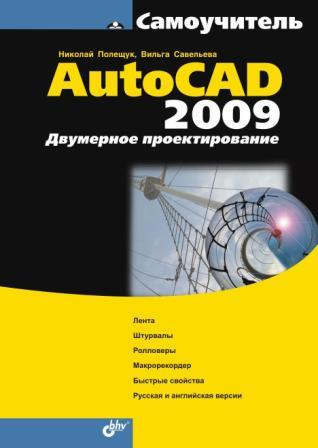
24. N.Poleshchuk, V.Savelyeva. "AutoCAD 2009 - Self-Teacher. 2D" ("Self-Teacher" series). BHV-Petersburg, 2008, 544 pp. ISBN 978-5-9775-0249-8.
The book is written for learning AutoCAD 2009 with a special attention to 2D work. Design graphical objects, commands of their creation and modification are considered. Text, dimension, multiline, table styles, nuances of linetypes, lineweights, hatches, fills, static and dynamic blocks, external references, annotation scaling are described. Authors investigate problems in connecting model and drawing layouts, show steps of using a new tool - action recorder. New elements are discussed: ribbon, menu browser, Quick Access toolbar, SteeringWheels, quick view of layouts and drawings, Quick Properties window. The book is written for Russian/English versions and will be useful for engineers, designers, postgraduates and students.